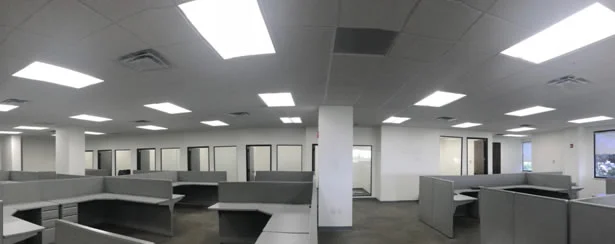Have you noticed that a while back, the regular old light bulbs we’ve always used in our homes and offices began disappearing out of stores. Now you may be noticing that getting your commercial building’s fluorescent bulbs replaced is becoming more and more difficult. Where have all the fluorescents gone?
Well, it’s a government thing. U.S. Department of Energy (DOE) regulations began phasing out various sizes of commercial fluorescent light bulbs all the way back in 2012. About all you can easily get today is the fluorescent workhorse of commercial lighting—the T81 bulb.
In January, 2018 the DOE banned the manufacturing of most T8s. Back in 2012 it was estimated that 20% of all commercial buildings and up to 44% of industrial buildings were using T8s. You’ll still be able to get them as supplies last, but manufacturing is being phased out. You’ll find any available T8s will be harder to get in the quantities needed and will be more expensive as they get more scarce.
Why is this happening?
The DOE is faced with an aging energy grid, a growing population, and tremendous pressure to make US energy more sustainable. Lighting energy is over 30% of most businesses energy consumption. Significant reduction of energy consumption in lighting could stretch existing resources considerably. So it’s safe to say that more changes are on the way.
If you are a commercial or industrial building owner you may find yourself suddenly posing these questions to yourself:
- Should we be planning a whole-scale lighting retrofit to more energy efficient bulbs?
- Is LED the best way to go? It has a higher initial replacement cost, but reduced energy use. And it’s less likely to fall victim to further DOE regulations in the next 10 years.
- How will LED change the quality of light in our space?
- How easily can new fixtures accommodate retrofit situations?
- Or can we keep our old fixtures? Can LED bulbs replace various different types of bulbs in my facility?
Here at CES we have relationships with LED manufacturers that are on the cutting edge of the state of the art and striving always to be steps ahead of DOE regulations.
We can help you decide if this is the right time to upgrade to LED lighting and we can help you understand how the quality of light will change in your space if you switch to LED.
An interesting fact is that the moment fluorescent bulbs are installed, they begin their degradation process. In other words, over the life of the bulb, the quality of light is constantly gradually lessening. You’ll often notice that near the bulb’s end of life, fluorescents are much dimmer than when they were new. This does not happen with LEDs.

We can also help you determine if only your bulbs need to be replaced or if you need whole fixtures replaced. I know it sounds scary, but it’s not that big of a deal in reality. We can handle it!
LEDs come in an unbelievable variety of shapes, sizes, and brightnesses that cover everything from decorative requirements to hard core industrial issues.
Just to show you we practice what we preach, CES is located in the top two floors of a 5 story building. Our two floors have LED lighting and the difference between our current lighting and the old fluorescent bulbs is significant! No more flickering! No more sore eyes. It’s very close to natural daylight.
The 3rd floor of the building we are in was just retrofitted for LED lighting. It’s beautiful! The fluorescents produced a dingy yellow light. The LEDs are again, like natural daylight. Here’s a picture.

Call us today and we will do an in-depth analysis of your commercial or industrial lighting situation. The funny thing about an LED retrofit is that you are already spending the money. When upgrading to LED you simply redirect what you are already spending. It’s truly very little out-of-pocket and often actually leaves you with a positive cash flow!
Contact Jeannine Hall at 844-277-0043 or email her at jhall@cesstaff.com.


